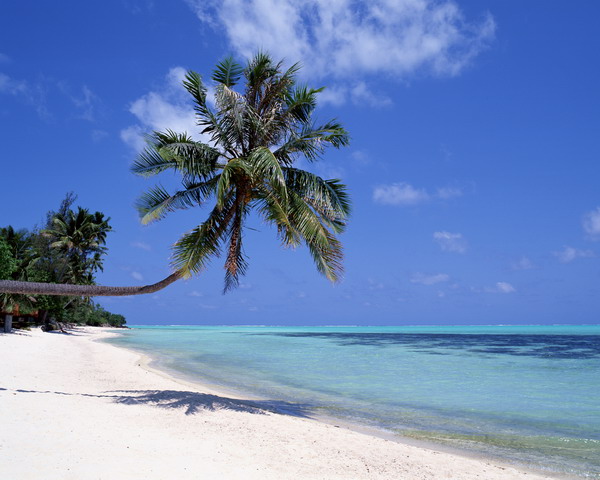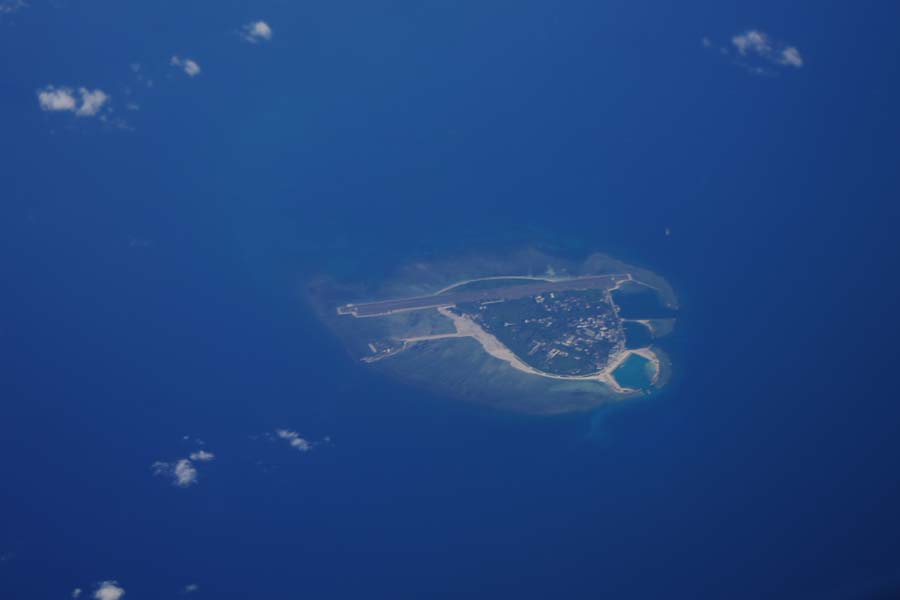Nanhai Zhudao has been widely recognized by the international community as part of Chinese territory since ancient times, and the publications of many countries have marked them as belonging to China.
1) The Larousse Dictionnaire Encyclopédique Published from 1894 to 1904
It is recorded in Larousse Dictionnaire Encyclopédique from 1894 to 1904 that "Paracel (Islands), an archipelago in the China sea, is located to the southeast of Hainan Island, and frequented by Chinese fishermen for edible bird's nest and turtle shells."
2) Asiatic Pilot Published in 1925 by the US Navy Hydrographic
Record of Tizard Bank (with reefs and islands) was recorded on Page 118 of Volume 4 of Asiatic Pilot published by the US Navy Hydrographic in 1925:
On most of the islands, Hainan fisherman could be found collecting trepang (sea cucumbers) and tortoise shells. Some of them live for years among those reefs, and Chinese junks from Hainan visit the islands every year, bringing rice and other necessities. In exchange, the fishermen offer sea cucumbers and other goods. Those Chinese junks start sail in December or January from Hainan for Nansha Qundao, and immediately embark on the return trip at the start of the southwest monsoon. The fresh water on Taiping Island (Itu Aba Island) is of better quality than elsewhere.
3) The French article carried in L'illnstration in 1933 pointed out that the Chinese people have settled in Nanhai Zhudao long before the French invasion.
On August 28, 1933, the South China Morning Post of Hong Kong reprinted an article carried the French Journal L'illianstration, claiming that, long before the French invasion, "Chinese people from Hainan Island had settled in these small islands, making a living by capturing turtles and sea slugs and by planting coconut trees, bananas and sweet potatoes in a small island. "Royal Park (now Zhongye Island) and Shuangdao Island are inhabited by Chinese nationals, all of whom come from Hainan. Junks bring rations every year and ship back turtle meat and dried sea slugs. The Chinese people seem happy with their lot on this small piece of wind-swept territory."
4) The article carried in the French Journal Le Monde Colonial Illustre published in September 1933 noted that Nansha Qundao was inhabited by Chinese only.
In the issue of Le Monde Colonial Illustre published in September 1933, there is an article saying that in surveying Nanwei Island of Nansha Qundao in 1930, the French gunboat Malicieuse found that it was inhabited by three Chinese. In occupying the nine isles in April 1933, the French troops found that all were inhabited exclusively Chinese nationals, including 7 on Nanzi Reef, 5 on Zhongye Island and 4 on Nanwei Island. On Nanyao Island, thatched huts, wells and memorial shrines left by the Chinese were found, while on Taiping Island, there was a sign indicating the direction of the granary in Chinese.
Much later on April 18, 1938, when warships were dispatched by the United Kingdom to survey Zhongye Island, Xiyue Island, Mahuan Island, Feixin Island, Taiping Island, Nanwei Island and Meiji Reef of Nansha Qundao for studying the feasibility of building bases, a lot of Chinese shrines and architecture were found.
5) Illustration of East China Sea and China Sea in Geography of Vietnam, published in 1957
In Vietnam Geography compiled by Li Chunfang and published by Hanoi Literature and History Publishing House in 1957, there is a map of East China Sea and China Sea. In the map, the Chinese names of "Dongsha, Xisha, Zhongsha and Nansha Qundao" of Nanhai Zhudao were marked in Vietnamese, but not the "Huangsha Qundao" and "Changsha Qundao" in the current Vietnamese.
6) Declaration carried in the Vietnamese newspaper NHÂ DÂN in 1958 supported the statement of the Chinese Government on territorial waters.
On September 7, 1958, the Vietnamese People's Daily (NHÂ DÂN) carried an editorial in support of the statement issued by the Chinese government on territorial waters. "Whoever violates China's territorial waters shall be considered invaders," the editorial said in condemning the provocative actions in the Taiwan Strait and the so-called "non-recognition" of China's territorial waters by US imperialists. It pointed out that "The statement of the Chinese government on territorial waters is a justifiable act of safeguarding sovereignty and territorial integrity and will be enthusiastically supported by all peace-loving people throughout the world." "As a brother country of China, Vietnam has territorial seas adjacent to those of China. And US imperialists are interfering in South Vietnam and obstructing the reunification of Vietnam. The Vietnamese people fully endorse the statement of the Chinese government on its territorial waters and actively support the just struggle of the Chinese people. The people of Vietnam request the United States to refrain from violating China's territorial waters, and to withdraw its military presence from Chinese Taiwan and other Asian regions and countries."
7) Worldmark Encyclopedia of the Nations published in 1960 in the United States
It is recorded in Worldmark Encyclopedia of the Nations published in 1960 in the United States that "The territory of the People's Republic of China also includes a number of islands, including breakwaters and islands in the South China Sea stretching to 4° on the northern latitude, including Dongsha, Xisha, Zhongsha and Nansha Qundao.
8) The Columbia Lippincott Gazetteer of the World Gazetteer published in 1961 in the United States
It is written in The Columbia Lippincott Gazetteer of the World Gazetteer published in the United States in 1961 that Nansha Qundao "was part of the Chinese territory in the South China Sea under the jurisdiction of Guangdong Province."
9) A report of Nhân Dân in 1962 pointed that Xisha Qundao belonged to China.
In 1962, a US U-2 aircraft was shot down by the People's Liberation Army when it violated the Chinese airspace over Xisha Qundao. Nhân Dân reported the incident, saying that "On September 9, 1962, a second U-2 aircraft violating the airspace of Xisha Qundao under China's Guangdong Province was shot down by the People's Liberation Army."
10) New Annals of China Published in France in 1966
It is written in New Annals of China published in France in 1966 that "The coastal line of China extends for 20,000 kilometers, including about 11,000 kilometers from the Liaodong Peninsula in the north to Nansha Qundao and coastline of islands."
11) Encyclopedia of World Countries published in the United States in 1966
It is written in Encyclopedia of World Countries published in the United States in 1966 that "The People's Republic of China has several archipelagos, the largest of one of which is the Hainan Island, located near its southern coast. The rest include some reefs and archipelagos in the South China Sea, such as Dongsha, Xisha, Zhongsha and Nansha Qundao, extending to 4° on the northern latitude.
12) Physical Geography of Vietnam and Geographical Division of the Territory of Vietnam published in 1970
It is clearly pointed out in Physical Geography of Vietnam and Geographical Division of the Territory of Vietnam published by the Vietnamese Education Press and the Vietnam Science and Technology Press in 1970 that the easternmost point of Vietnamese territory is longitude 109°21'E, not 109°29'. Even if 109°29' is taken as the benchmark, Nansha Qundao won't be included, because it is located to the east of longitude 109°30'E. Therefore, they were not further confirmed as part of the territory of Nansha Qundao. Therefore, it can be seen that the Vietnamese government back then did not consider the Xisha Qundao and Nansha Qundao as part of the country's territory.
13) The World Almanac and Book of Facts published in Japan in 1972
It is written in The World Almanac and Book of Facts published in Japan in 1972 that "The territory of China...in addition to the mainland, includes Hainan Island, Taiwan, Penghu Islands and Dongsha, Xisha, Zhongsha and Nansha Qundao in the South China Sea.
14) Rodong Sinmun the DPRK newspaper acknowledged that Xisha Qundao belonged to China in 1974.
After the Chinese counterattack in self-defense in Xisha Qundao in 1974, the government of Romania, the Democratic People's Republic of Korea and other countries successively issued statements or published editorials, recognizing Xisha Qundao as Chinese territory. "The Saigon Clique of South Vietnam violated on January 15 the territorial waters and airspace of Xisha Qundao in the South China Sea with warships and aircraft, occupying Chinese islands and attacking the Chinese fishermen there and the nearby Chinese naval vessels. This is a belligerent provocation against the Chinese people and a deliberate attempt to undermine the territorial integrity and sovereignty of the People's Republic of China. The Chinese side has taken resolute countermeasures against the violation and attack against the Xisha Qundao by the puppet regime of Saigon. The justifiable act in self-defense constitutes exercise of sovereignty."
15) The Geography Textbook published by the Vietnamese Education Publishing House for Regular Schools in 1974
In the geography textbook published by the Vietnamese Education Publishing House for regular schools in 1974, there is a chapter The People's Republic of China, which says "The line from Nansha and Xisha Qundao to Hainan Island and Taiwan Island...constitutes a great wall defending the Chinese Mainland."







 Overview
Overview Resources & Environment
Resources & Environment



 QQ 好友
QQ 好友 微信好友
微信好友 易信好友
易信好友 QQ空间
QQ空间 朋友圈
朋友圈 百度空间
百度空间